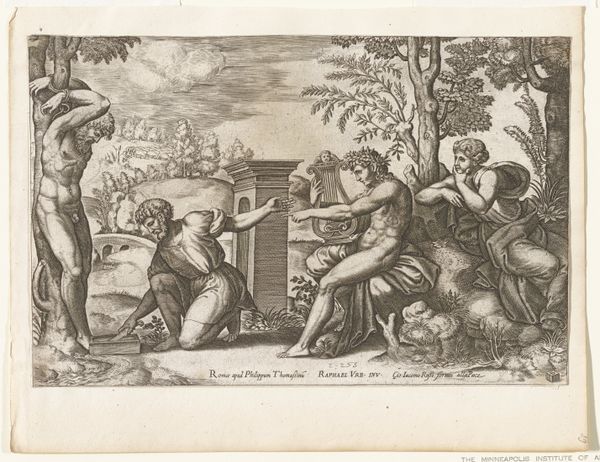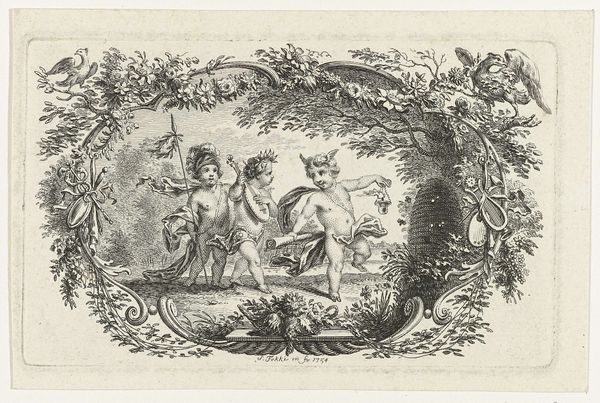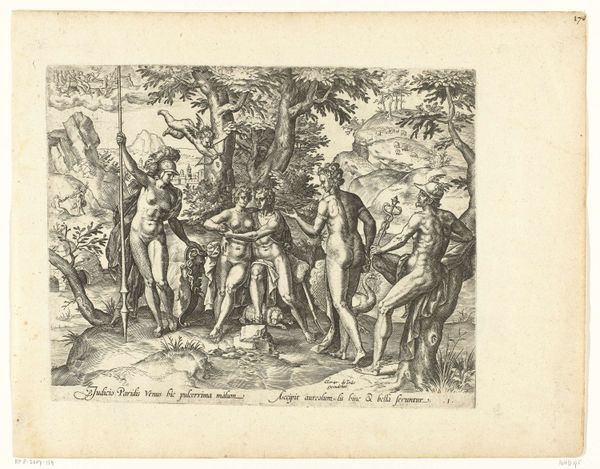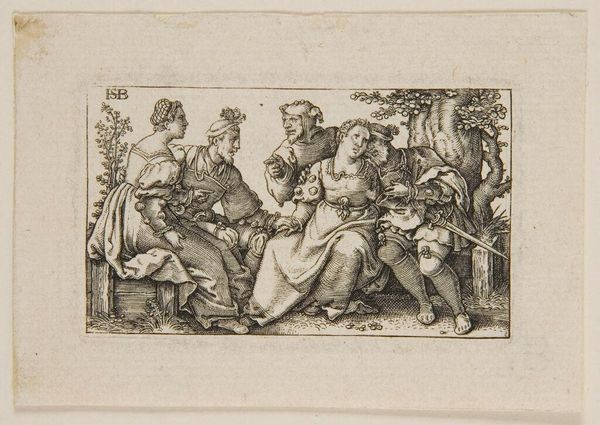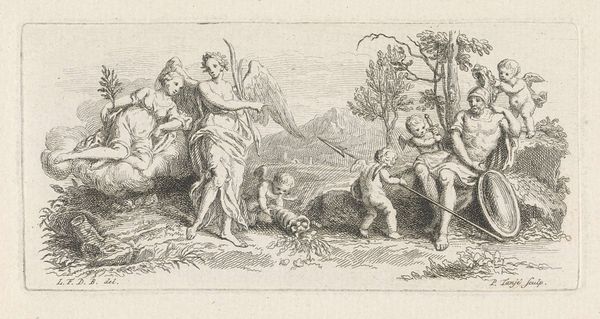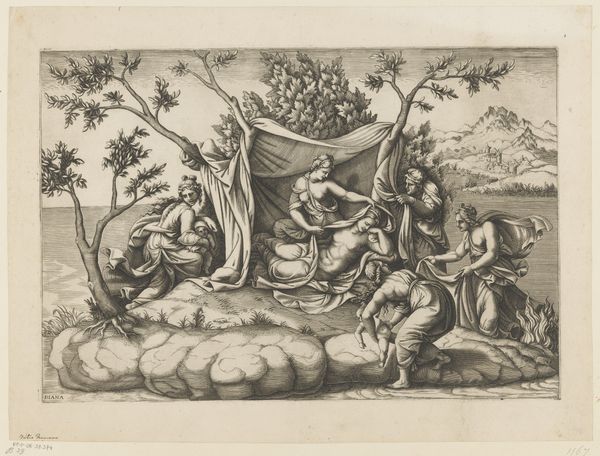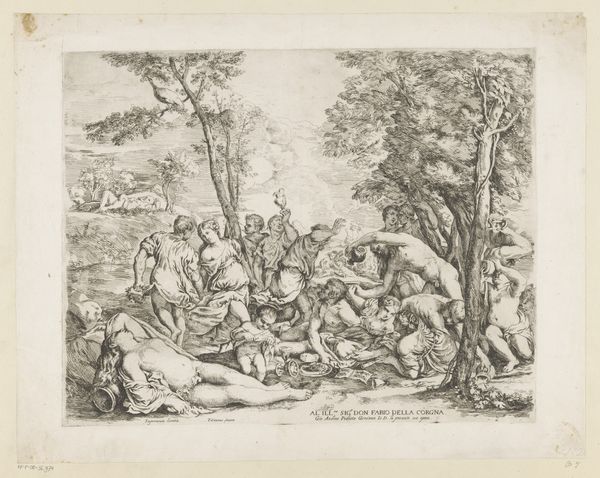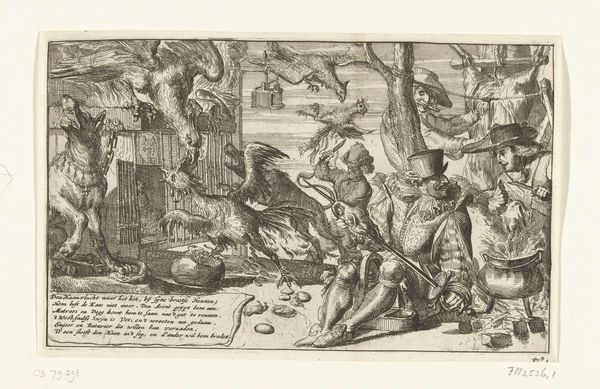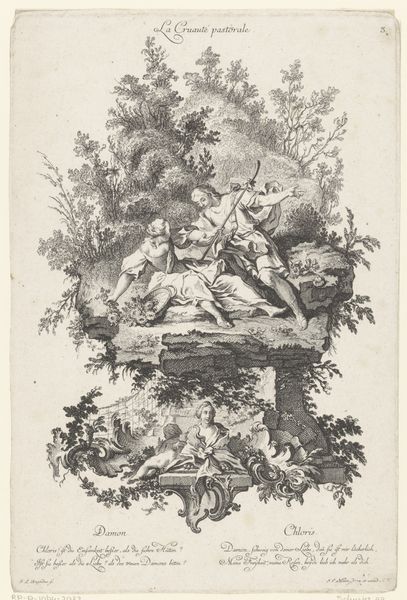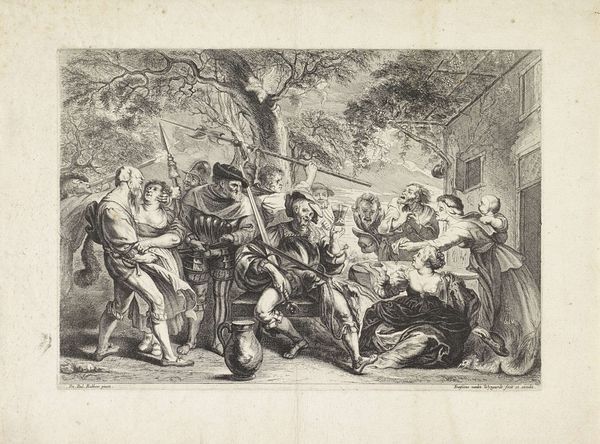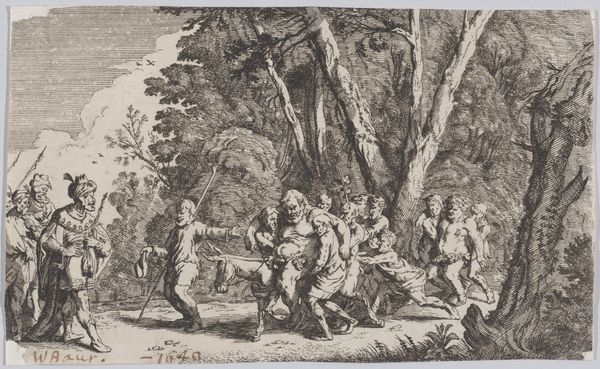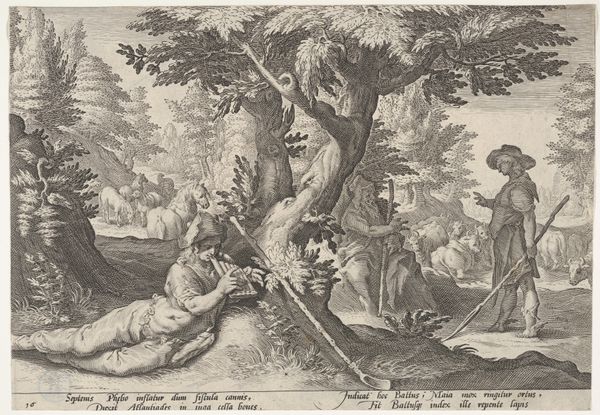
drawing, ink, pen
#
drawing
#
ink drawing
#
allegory
#
baroque
#
pen drawing
#
ink
#
pen
#
nude
Dimensions: height 156 mm, width 225 mm
Copyright: Rijks Museum: Open Domain
Jan de Bisschop created this print, "The Contest between Apollo and Pan," in the 17th century. It is an etching, a process where acid is used to cut into a metal plate, which is then inked and printed onto paper. The stark contrast between the ink and paper gives a sense of depth and texture, highlighting the detailed lines that define the figures and landscape. The etching technique itself, requiring careful control and precision, elevates this print beyond a mere reproduction. It is a testament to the skill of the artist. Consider the labor involved in creating the printing plate, and the number of impressions that could be made from it. The ability to reproduce images mechanically had a profound impact on the dissemination of art and ideas, playing a crucial role in shaping cultural tastes and social discourse. So, while this may seem like a simple image, it is deeply intertwined with the social and cultural context of its time.
Comments
rijksmuseum about 2 years ago
⋮
This etching was presumably meant to be part of a series of 100 prints for the instruction of young artists, the Paradigmata. The 17th-century Dutch title translates as: Examples of Drawing by Diverse Masters. De Bisschop’s premature death, however, prevented the completion of this series. The series that appeared after his death counted only 57 prints, and included this Apollo and Pan.
Join the conversation
Join millions of artists and users on Artera today and experience the ultimate creative platform.
